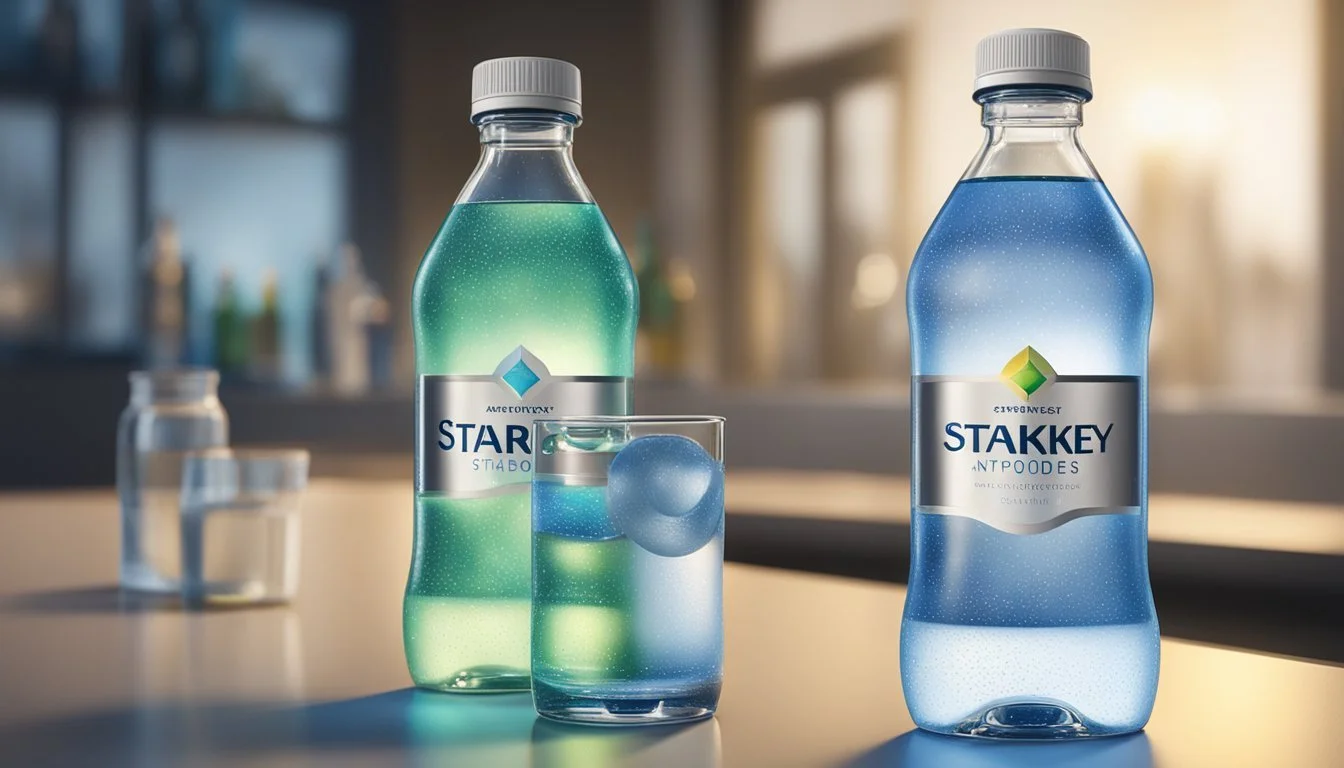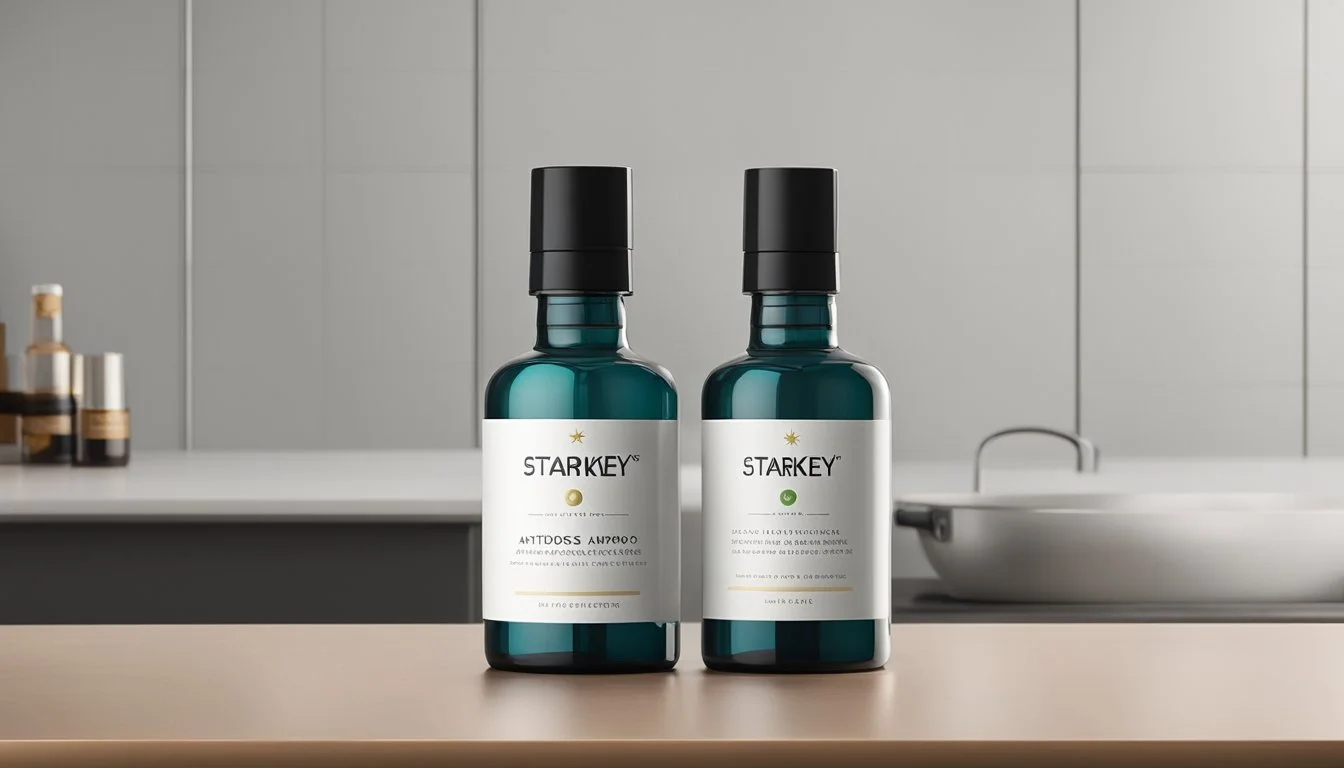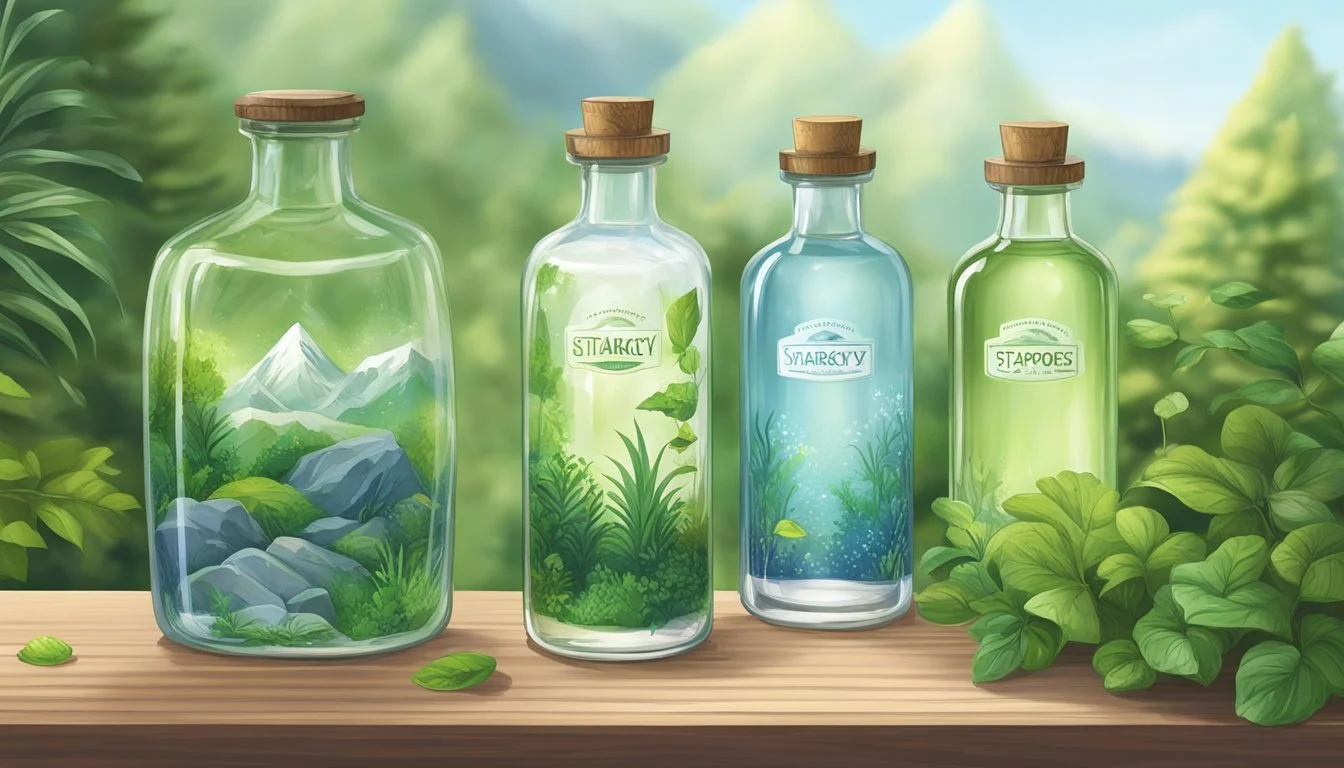Starkey vs. Antipodes
Which Bottled Water Is Better for You?
Choosing the best bottled water can be perplexing with numerous brands vying for attention. Starkey and Antipodes are two prominent brands that stand out due to their unique qualities and origins. Starkey, sourced from a geothermal spring in Idaho, boasts a naturally high pH, which many claim enhances hydration. On the other hand, Antipodes, hailing from the aquifers of New Zealand, is celebrated for its smooth, clean taste and naturally alkaline water.
In terms of taste and purity, Antipodes emerges as the preferred choice for those prioritizing a clean, refined flavor. Its naturally alkaline properties, derived from pristine New Zealand sources, add to its appeal for health-conscious consumers. Meanwhile, Starkey's high mineral content offers its own set of benefits, making it a viable option, especially for those who appreciate mineral-rich water.
Both brands bring specific advantages to the table. While Antipodes offers a smoother tasting experience, Starkey's unique mineral profile can cater to varying hydration needs. This article will delve deeper into these aspects, helping you make an informed decision about which bottled water suits your preferences best.
Understanding Bottled Water
When selecting bottled water, it's essential to know what differentiates various types and to understand the industry standards that govern quality and safety. This helps ensure safe hydration with the desired mineral content.
Types of Bottled Water
There are several types of bottled water categorized by their sources and processing methods. Natural spring water comes from an underground formation where water flows naturally to the surface. It retains natural minerals and varies in composition based on the source.
Purified water goes through processes such as distillation, deionization, or reverse osmosis to remove contaminants, including lead and other impurities. Its mineral content is typically added back after purification.
Artesian water is sourced from a well that taps a confined aquifer, promising a certain purity. Mineral water contains specific amounts of natural minerals and must have a constant composition.
Alkaline water is designed to have a higher pH level, theoretically providing additional health benefits, though evidence varies. Lastly, boxed water offers a more sustainable packaging option, reducing the environmental footprint compared to traditional plastic or glass bottles.
Bottled Water Industry Standards
The bottled water industry is regulated to ensure safety and quality. The FDA establishes and enforces standards for bottled water as it does for other food and beverages. These standards cover everything from labeling requirements to permissible levels of contaminants and minerals.
Labeling regulations require transparency about sources and content, including whether water is from a natural spring, purified, or another type. Processing standards ensure water is treated correctly, whether it's through filtration or other purification methods.
Sustainability practices, such as using recyclable materials and reducing emissions, are increasingly important. Eco-conscious brands may opt for glass bottles or sustainable packaging like boxed water. These considerations are essential for both consumer health and environmental responsibility.
Profile of Starkey and Antipodes
Starkey, a prominent brand in hearing aids, has a long history of innovation, while Antipodes excels as a premium bottled water from New Zealand, recognized for its purity. Both excel in their respective fields due to unique production processes and emphasis on high-quality standards.
Starkey: Origin and Production
Starkey, founded in 1967 in the USA, is a leading name in the hearing aid industry. Known for its advanced technology and user-centric design, Starkey focuses on producing hearing aids that are easy to use and highly effective.
Key Features:
Technology: Starkey integrates cutting-edge technology, including artificial intelligence and health tracking, into its hearing aids.
Materials: Uses high-quality, durable materials to ensure longevity and comfort.
Antipodes: Origin and Production
Antipodes is sourced from an artesian aquifer in the Bay of Plenty, New Zealand. This premium bottled water is celebrated for its purity and smooth texture.
Key Features:
Source: Artesian aquifer, ensuring natural filtration and high-quality taste.
Composition: Rich in minerals like calcium and sodium, contributing to a balanced, soft mouthfeel.
Packaging:
Eco-friendly glass bottles, prioritizing sustainability and maintaining the water's pristine quality.
By focusing on specifics and key features, the comparison highlights the distinct attributes of Starkey and Antipodes. The detailed profiles underline their respective strengths in hearing aids and bottled water, offering insights into why consumers might choose one over the other.
Health and Safety Considerations
When comparing Starkey and Antipodes bottled water, it is important to discuss potential health benefits and adherence to regulatory safety standards that ensure quality and consumer safety.
Potential Health Benefits
Antipodes is known for being slightly alkaline with a pH ranging from 7.5 to 8.0. This alkalinity may aid in neutralizing body acidity, contributing to overall well-being. The water is sourced from a New Zealand aquifer, rich in minerals like calcium, magnesium, and potassium.
Starkey, on the other hand, is also considered a premium brand, often marketed for its purity and rich mineral content. It contains essential minerals that could support bodily functions, including calcium for bone health and magnesium for muscle function.
Both brands maintain a neutral or slightly alkaline pH, contributing to a clean and refreshing taste while potentially offering additional health benefits through their mineral compositions.
Regulatory Safety Standards
Antipodes adheres to strict regulations, ensuring the water is free from contaminants. Regular testing is conducted to meet the standards set by health authorities. Its water quality is maintained through rigorous filtration and testing processes, achieving high safety levels.
Starkey also complies with stringent Environmental Protection Agency (EPA) regulations. The brand emphasizes extensive quality control measures, including frequent water quality checks and advanced filtration technologies to remove impurities.
Both brands ensure their products meet safety standards, providing consumers with confidence in the purity and quality of the water they consume. This commitment to safety and quality control is crucial for health-conscious individuals.
Environmental Impact and Sustainability
Both Starkey and Antipodes aim to reduce their environmental footprint by focusing on sustainable practices and the materials used in their bottling processes. Key differences exist in their approach to materials and the eco-friendly initiatives they implement.
Materials and Manufacturing
Starkey primarily utilizes plastic bottles for their packaging. While lightweight and cost-effective, plastic bottles contribute significantly to environmental pollution if not disposed of properly.
Antipodes, on the other hand, uses glass bottles, which are more environmentally friendly as they can be recycled indefinitely without losing quality. However, the manufacturing of glass has a higher carbon footprint due to energy-intensive processes.
Both companies recognize the importance of sustainability in their manufacturing processes. Starkey focuses on lightweight plastic to reduce transportation emissions, whereas Antipodes highlights the purity of using glass, aiming to appeal to environmentally conscious consumers.
Eco-Friendly Practices
Sustainability initiatives play a crucial role for both bottled water companies. Starkey implements programs to promote the use of reusable bottles and encourages proper recycling of its plastic packaging. They also invest in reducing greenhouse gas emissions during the production and distribution processes.
In contrast, Antipodes emphasizes its commitment to carbon neutrality by offsetting emissions through various environmental projects. Their use of glass bottles is underscored by initiatives to improve recycling rates and minimize waste.
Both companies strive to minimize their environmental impact by adopting practices that align with global efforts to combat plastic pollution and promote the use of sustainable materials.
The Importance of Source Quality
Understanding the source of bottled water is critical as it influences purity, mineral content, and overall taste. Starkey and Antipodes highlight the differences between aquifers and natural springs, and the filtration methods used to maintain water quality.
Aquifers and Natural Springs
Starkey sources its water from deep geothermal aquifers, which provide a unique mineral composition. These aquifers create water rich in silica and other beneficial minerals. Antipodes, on the other hand, sources from deep underground aquifers in New Zealand, ensuring purity and high mineral contents like calcium.
Natural springs, used commonly in other brands such as Icelandic Glacial, contribute to water purity. Arrowhead also relies on mountain springs, which naturally filter water through earth and stone, preserving mineral benefits. Location and depth of the source heavily influence the quality, taste, and health benefits.
Filtration and Purity
Filtration is a crucial step in ensuring pure and safe drinking water. Starkey and Antipodes utilize advanced filtration processes to remove contaminants while preserving essential minerals. Starkey employs geothermal filtration, ensuring naturally occurring minerals remain intact.
Antipodes uses a method to maintain its natural mineral composition without additional additives. Comparison with tap water reveals significant differences in purity levels; tap water often contains more contaminants.
Brands like Vitaminwater may enhance water with vitamins but can’t compete with the natural purity and mineral retention of aquifer or spring-sourced water. Pure water sources guarantee fewer impurities and better taste profiles, crucial for consumers seeking high-quality bottled water.
Taste and Minerality
Starkey and Antipodes offer distinctive taste experiences due to their unique mineral compositions. Understanding these differences can assist consumers in selecting the water that best suits their preferences.
Mineral Profile and Taste
Starkey's water is rich in minerals including magnesium and potassium, contributing to a balanced yet slightly earthy taste. These minerals not only enhance flavor but also provide essential nutrients, creating a complex and satisfying drinking experience. The water's clean taste and notable mineral profile appeal to health-conscious buyers looking for more than just hydration.
In contrast, Antipodes is known for its neutral pH and velvety mouthfeel, attributed to its silica content. This contributes to a smooth taste that many find refreshing and easy to drink. The water's balanced mineral content enhances its crisp and pure flavor, offering a different experience from the mineral-rich Starkey.
Taste Testing and Sommelier Insights
Several taste tests reveal distinct preferences between the two brands. Water sommeliers note that Starkey's mineral complexity provides a full-bodied taste that pairs well with robust flavors in food. Its slightly earthy undertones make it a favorite among those who enjoy a more substantial water profile.
Antipodes, preferred for its crispness and neutral taste, often appeals to those who favor a lighter, more refreshing water. Sommeliers highlight its suitability for fine dining, where its subtlety complements rather than competes with cuisine flavors.
While both waters have their devotees, their taste and minerality cater to different palates, allowing consumers to choose based on personal preference and occasion.
Packaging and Convenience
Starkey and Antipodes differ significantly in their packaging design and the ease with which consumers can purchase them.
Bottle Design and Materials
Starkey:
Starkey's bottles are made of glass, which provides several advantages.
Glass bottles preserve the taste and ensure no plastic leaches into the water.
The design is sleek, with a minimalist label that reflects their premium branding.
They are heavier than plastic bottles, making them less convenient for on-the-go use.
Antipodes:
Antipodes uses glass bottles as well, emphasizing sustainability and premium experience.
These glass bottles are thick and durable, reducing the risk of breakage.
The branding is elegant, appealing to those looking for an upscale option.
Like Starkey, the weight can be a drawback for portability.
Availability and Accessibility
Starkey:
Starkey water is often available at specialty stores and high-end grocery outlets.
It can also be purchased online directly through their website or through various e-commerce platforms.
This makes it accessible for those looking for convenience in urban areas but might be harder to find in more rural locations.
Antipodes:
Antipodes has a slightly broader availability in both boutique and mainstream grocery stores.
It's also widely available online, providing multiple purchase options.
The brand ensures a presence in environmentally-conscious and high-end retail spaces, reflecting its target market.
Starkey and Antipodes's packaging choices significantly impact their consumer convenience and brand image.
Cost Comparison
Starkey and Antipodes each cater to different market segments, resulting in varied price points that reflect their target consumers.
Price Points and Market Segmentation
Starkey positions itself as a premium brand, often marketed as a luxurious option. This brand’s water is sourced from deep, ancient geothermal springs, contributing to its unique positioning. Prices typically range from $2 to $2.50 per bottle. This makes Starkey a choice for those prioritizing indulgence and prestige in their hydration.
Antipodes, meanwhile, occupies a middle ground between high-end luxury and everyday hydration. It is known for its clean taste and balanced mineral content, sourced from New Zealand aquifers. Prices for Antipodes range from $1.50 to $2 per bottle, making it accessible yet still premium enough for discerning tastes. This balance makes it suitable for both personal preference and broader consumption.
Consumer Perspectives
Consumers often express their preferences based on factors like taste, mouthfeel, and packaging. Brand loyalty and reviews play a crucial role in shaping these perspectives.
Customer Reviews and Brand Loyalty
Starkey and Antipodes are both premium bottled water brands frequently compared to labels like Fiji Water and Voss. Starkey often receives high ratings for its smooth texture and balanced mineral content. Some consumers praise its earthy taste, which sets it apart from competitors like Dasani and Aquafina.
Antipodes, in contrast, is consistently noted for its pure, velvety mouthfeel, attributed to its high silica content. It also benefits from its environmentally friendly glass packaging, appealing to eco-conscious customers. Loyalty to Antipodes is strong, particularly among those who value sustainable practices.
Among other premium options, Essentia and smartwater also have dedicated followings, but Starkey and Antipodes's unique characteristics help them stand out in a crowded market. Preferences often hinge on individual tastes and values, making these two brands favorites for different reasons.
More About Starkey
Icelandic Glacial vs Starkey: Which Bottled Water is Better?
Mountain Valley Spring Water vs Starkey: Which Bottled Water is Better?
Starkey vs Kirkland Signature: Which Bottled Water is Better?
Starkey vs Richard's Rainwater: Which Bottled Water is Better?
Starkey vs Whole Foods Italian Still Mineral water: Which Bottled Water is Better?
More About Antipodes
Antipodes vs Cascade Mountain: Which Bottled Water is Better?
Antipodes vs Hawaii Volcanic: Which Bottled Water is Better?
Antipodes vs Kirkland Signature: Which Bottled Water is Better?
Antipodes vs Richard's Rainwater: Which Bottled Water is Better?
Antipodes vs Solan de Cabras: Which Bottled Water is Better?
Antipodes vs Talking Rain AQA: Which Bottled Water is Better?
Antipodes vs Whole Foods 365: Which Bottled Water is Better?
Antipodes vs Whole Foods Italian Still Mineral water: Which Bottled Water is Better?
Hawaiian Springs vs Antipodes: Which Bottled Water is Better?
Icelandic Glacial vs Antipodes: Which Bottled Water is Better?
Mountain Valley Spring Water vs Antipodes: Which Bottled Water is Better?
Nestle Pure Life vs Antipodes: Which Bottled Water is Better?





